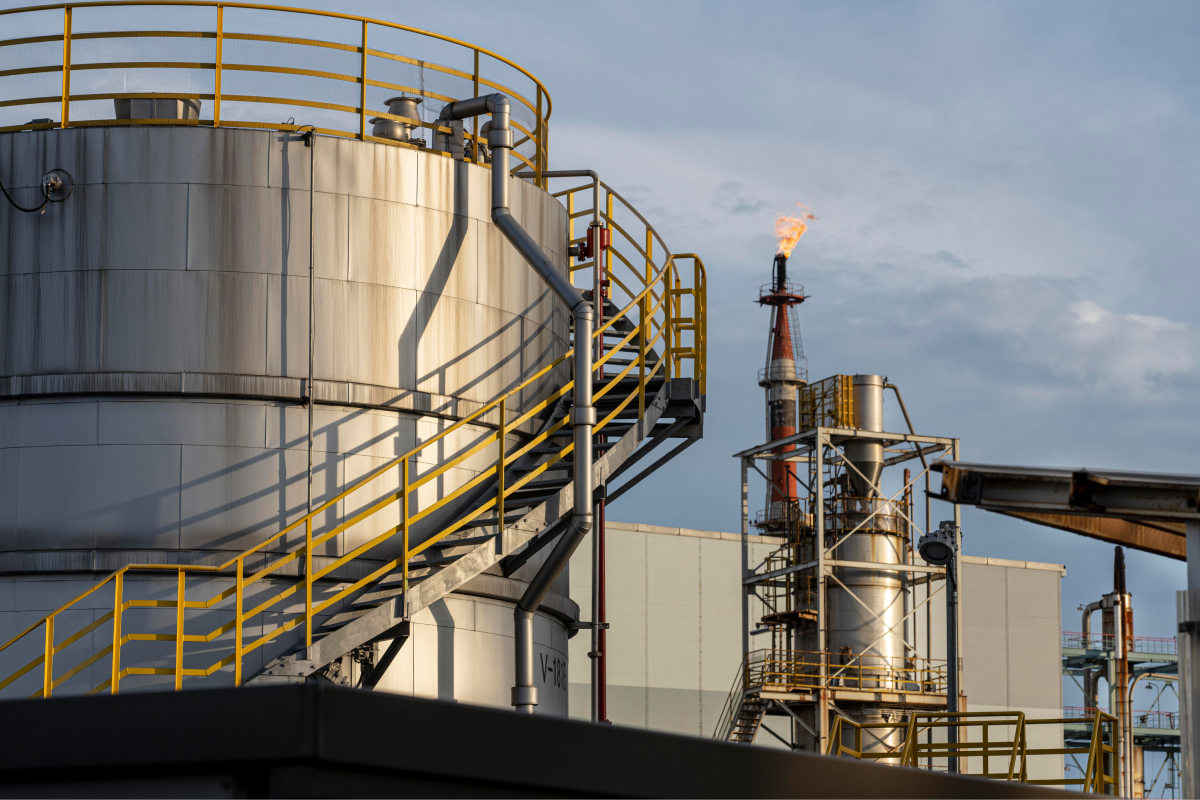Our Transition Principles
-
Reliability first: People and businesses still need dependable power today.
-
Decarbonise what exists: Methane control, efficiency, and operational excellence deliver near-term wins.
-
Build the new carefully: Renewables, storage, and flexible gas must be engineered to grid and market realities.
-
Prove it with data: Transparent KPIs, QA/QC, and digital traceability—every time.
What We’re Doing Now (Six Pillars)
1) Cutting Emissions from Existing Operations
-
LDAR (optical gas imaging, ultrasound, and drone surveys) to find and fix leaks fast.
-
Flaring & venting minimisation via commissioning plans, temporary gas capture, and smarter start-up/shutdown.
-
Energy efficiency on sites and yards: right-sized generators, VFDs, efficient lighting, idle-reduction.
Outcome: Lower emissions intensity without sacrificing throughput.
2) Gas as a Flexible Bridge
-
High-efficiency gas systems to stabilise grids as renewable penetration rises.
-
Hydrogen-blend readiness assessments (materials, metering, controls, hazardous area compliance).
Outcome: Firm capacity that complements intermittent renewables.
3) Renewables & Hybrids for Industry
-
Solar PV and onshore wind balance-of-plant (civils, electrical, substations, SCADA).
-
Hybridisation: Solar + BESS + gas back-up for plants that demand uptime.
-
Microgrids with islanding/black-start for remote assets.
Outcome: Lower OPEX, lower emissions, improved resilience.
4) Storage & Grid Integration
-
BESS engineering (protection, controls, thermal safety).
-
Grid interconnections, substation works, and grid-code compliance.
-
Power-quality solutions: harmonics, reactive power, stability studies.
Outcome: Renewables that actually integrate and perform.
5) Emerging Fuels & Carbon Management
-
Hydrogen projects: materials selection, metering accuracy, safety cases.
-
Biofuels/e-fuels: blending interfaces and custody transfer.
-
CCUS interfaces: pre-FEED/FEED tie-ins, compression, monitoring points.
Outcome: Practical pathways where electrification alone is not enough.
6) Digital Operations & Assurance
-
CMMS-driven maintenance to prevent failures and leaks.
-
Digital ITPs/MDRs and paperless permits for traceability and audits.
-
Operational dashboards: fuel, flare, leak, and energy KPIs to drive improvement.
Outcome: Faster decisions and auditable progress.
People, Skills & Supply Chain
-
Reskilling: E&I and controls teams trained on inverter-based resources, BESS safety, and protection settings.
-
Safety elevation: Hydrogen and battery systems require refreshed HAZOP/HAZID and emergency response.
-
Local content: Developing renewable-ready vendors (DC cabling, racking, protection panels) to international standards.
Governance You Can Trust
-
Integrated QHSE aligned with ISO 9001, ISO 14001, ISO 45001 principles.
-
Project-level emissions and efficiency KPIs using recognised methodologies.
-
Change control & QA/QC embedded—hold points, inspection records, and MDRs digitised.
2025–2030 Milestones (Where We Control Delivery)
-
By 2026: LDAR on 100% of Geigerpipe-controlled projects; hybrid/electric lighting as site standard.
-
By 2027: Offer solar/BESS hybrid packages as a default option for industrial clients.
-
By 2028: 25% reduction in diesel intensity (per productive hour) vs. 2024 baseline across yards and temporary works.
-
By 2029: Demonstrate hydrogen-blend readiness on at least two pipeline/facility upgrades.
-
By 2030: Eliminate routine flaring on Geigerpipe-controlled commissioning activities where technically and commercially feasible.
(On client-operated sites, we drive influence through design choices, procedures, and tender options.)
How Clients Can Engage
-
Define outcomes early: We’ll map them into method statements, ITPs, and schedules.
-
Ask for options: Side-by-side cases (VRU vs. flare; diesel vs. hybrid power; BESS sizing trade-offs).
-
Share baselines: Joint dashboards accelerate savings and validate progress.
-
Plan permits & grid: Interconnections and protection settings often drive timelines—start early.
FAQ (Short)
Will renewables replace gas immediately?
No—firm capacity remains essential while renewable build-out and grid upgrades scale.
Where should we start?
Decarbonise existing operations (methane, flaring, efficiency) and pilot a hybrid or BESS project to learn fast.
Is hydrogen ready?
For selected blends and industrial cases—yes, with careful materials, metering, and safety engineering.
Final Word
The transition isn’t a slogan—it’s disciplined engineering. By improving today’s assets and building tomorrow’s capacity, Geigerpipe helps clients move faster, safer, and with measurable results.
